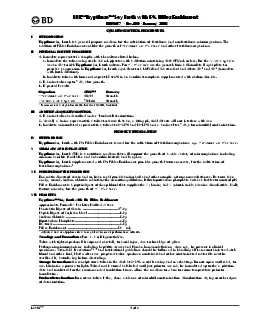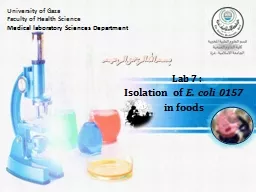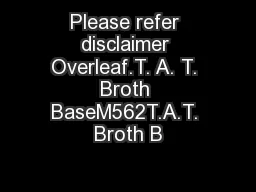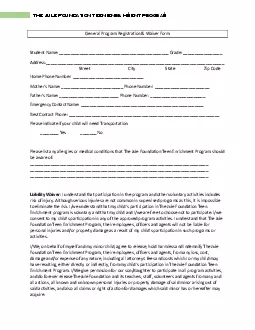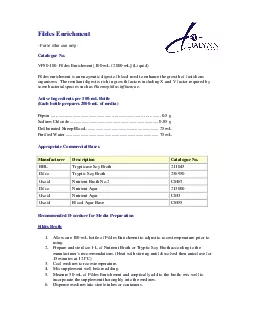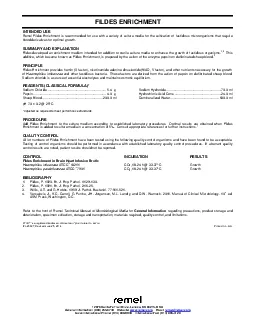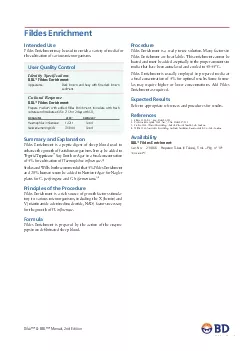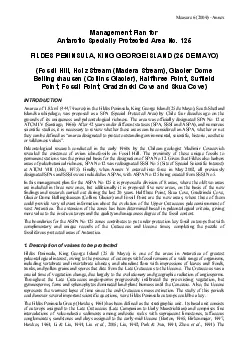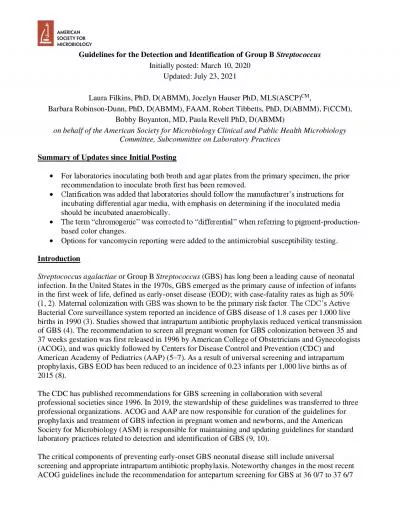PDF-TrypticaseSoy Broth with 5 Fildes Enrichment
Author : morgan | Published Date : 2021-09-23
Rev 00 IINTRODUCTIONTrypticaseIIPERFORMANCE TEST PROCEDURE1Inoculate representative samples with the cultures listed belowaInoculate the tubes using sterile 10 mL
Presentation Embed Code
Download Presentation
Download Presentation The PPT/PDF document "TrypticaseSoy Broth with 5 Fildes Enrich..." is the property of its rightful owner. Permission is granted to download and print the materials on this website for personal, non-commercial use only, and to display it on your personal computer provided you do not modify the materials and that you retain all copyright notices contained in the materials. By downloading content from our website, you accept the terms of this agreement.
TrypticaseSoy Broth with 5 Fildes Enrichment: Transcript
Download Rules Of Document
"TrypticaseSoy Broth with 5 Fildes Enrichment"The content belongs to its owner. You may download and print it for personal use, without modification, and keep all copyright notices. By downloading, you agree to these terms.
Related Documents

